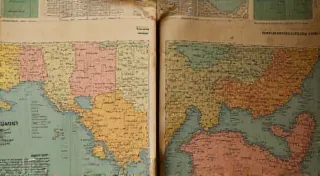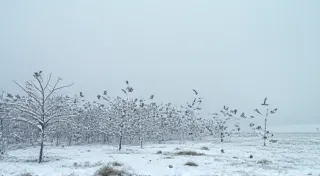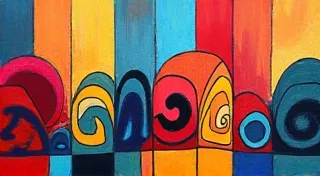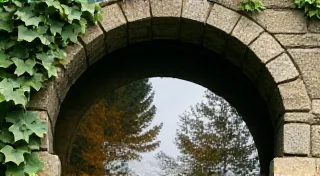Regional Wood Carving Styles: A Journey Through Tradition and Technique
Welcome to a deep dive into the captivating world of regional wood carving styles! For centuries, skilled artisans have transformed raw timber into objects of profound beauty, spiritual significance, and historical record. This website is dedicated to exploring the incredible diversity of these traditional carvings, examining the techniques, stories, and cultural contexts that shape them. We invite you to embark on a journey that spans continents and delves into the heart of human creativity.
Wood carving, more than just a craft, is often a vital form of folk art and a powerful means of cultural expression. Across the globe, the tools, methods, and motifs employed by wood carvers vary dramatically, reflecting the unique landscapes, beliefs, and histories of their respective regions. From the intricate masks of the Pacific Northwest to the delicate lacework of East Asia, each style holds a distinct narrative.
The Historical Tapestry: Understanding the Artisan's Place
Before we appreciate the artistry itself, it's important to consider the social standing of the individuals who create these masterpieces. “The Artisan's Shadow: Examining the Social Status of Wood Carvers Historically” explores this fascinating aspect, revealing how the roles and respect afforded to wood carvers have fluctuated throughout history. Sometimes revered as spiritual leaders, at other times relegated to the margins of society, their position has always been intertwined with the broader cultural and economic dynamics of their communities.
The materials themselves tell a story. The act of “From Branch to Bearing: The Cultural Significance of Wood Species Selection” is deeply symbolic. Different woods possess different qualities – strength, grain pattern, color – and these qualities are often imbued with meaning. The choice of wood isn't arbitrary; it's a conscious decision that reflects the carver's understanding of the natural world and their place within it.
Beyond Aesthetics: Wood Carving and Spirituality
While the visual appeal of wood carving is undeniable, its significance often extends far beyond mere aesthetics. For many cultures, wood carving is a form of spiritual expression, a way to connect with the divine and the ancestors. “Beyond Function: Wood Carving as a Form of Spiritual Expression” delves into this dimension, uncovering the rituals, beliefs, and symbolic meanings that inform the creation and use of carved objects.
The repetitive nature of many carving tasks can also be profoundly meditative. “The Sculptor's Soliloquy: Finding Meaning in Repetitive Carving Patterns” offers a unique perspective on this aspect, exploring how the process of carving can become a form of self-discovery and connection to something larger than oneself.
The Tools of the Trade: A Dance of Precision
The creation of these intricate carvings requires not only skill but also a deep understanding of the tools of the trade. “Beyond the Axe: Tools and the Alchemy of Regional Woodworking” examines the evolution of woodworking tools and the ingenuity of carvers in adapting them to achieve specific effects. From simple hand axes to more sophisticated chisels and gouges, each tool plays a vital role in shaping the final form.
The "dance of the chisel" – the precise and controlled movements required to execute intricate details – is a skill honed through years of practice and apprenticeship. “The Dance of the Chisel: Muscularity and Precision in Regional Carving Schools” analyzes the different approaches to training and the development of this critical technique across various carving schools.
Echoes of the Landscape: Influences on Regional Styles
The environment plays a crucial role in shaping regional carvings. The types of trees available, the prevailing climate, and the surrounding landscape all influence the materials and motifs used by carvers. “The Echoes in the Grain: How Landscape Shapes Regional Carving Narratives” explores this powerful connection, revealing how the natural world becomes embedded in the carved forms.
Even the texture of the wood itself can tell a story. “The Silent Language of Grain: Reading the Secrets in Wood's Texture” offers a fascinating look at how skilled carvers interpret the patterns and imperfections in the wood, using them to enhance the overall aesthetic and narrative impact of their work.
Community and History: Carving as Chronicle
Often, wood carving serves as a powerful tool for preserving and transmitting cultural memory. Carved objects can depict historical events, ancestral figures, and community traditions, serving as tangible reminders of the past. “The Carving as Chronicle: Embodying Community History in Wood” examines how carving has been used to record and celebrate the collective identity of communities.
The stories embedded within these carvings aren’t always straightforward. “The Metamorphosis of Motif: Tracing the Evolution of Regional Carving Themes” looks at how carving themes have shifted and blended over time due to cultural exchange and adaptation.
The Impact of Colonialism & Loss
The history of wood carving is not without its challenges. Colonialism and globalization have had a profound impact on traditional carving practices, leading to the suppression of certain styles and the introduction of foreign influences. “Fractured Form: The Influence of Colonialism on Indigenous Carving Styles” addresses this complex and often painful chapter in the history of carving.
Sometimes, entire carving traditions vanish, leaving behind only fragments of knowledge and incomplete artifacts. “The Geometry of Absence: Lost Carving Styles and Their Potential Reconstruction” explores the challenges and possibilities of reconstructing these lost traditions, piecing together clues from surviving objects and oral histories.
Sacred Geometry & Narrative
Many traditional carvings incorporate principles of sacred geometry, reflecting a deep understanding of proportion and harmony. “The Geometry of the Soul: Sacred Proportion in Wood Carving Motifs” examines the significance of these geometric patterns and their role in conveying spiritual meaning.
The Intersection of Crafts
Carving rarely exists in isolation. Often, it intertwines with other traditional crafts, creating unique and compelling forms. “Echoing Vessels: The Intersection of Carving and Pottery Traditions” explores this fascinating interplay, revealing how carving and pottery have influenced and enriched one another.
Preservation & the Future
The passage of time takes its toll on even the most skillfully crafted objects. “Resonance and Ruin: The Poetics of Decay in Antique Wood Carvings” delves into the beauty and poignancy of antique carvings, exploring the ways in which decay can enhance their aesthetic and emotional impact. It also highlights the challenges of preservation.
But the story doesn’s end with the past. “Reverberations of the Forest: Modern Interpretations of Traditional Regional Carving” showcases how contemporary artists are drawing inspiration from traditional carving styles, creating new and innovative works that build upon the rich heritage of the past. The skills passed down through generations continue to evolve.
Apprenticeship and Ontology
The knowledge of carving is frequently passed from master to apprentice, a crucial link in preserving cultural heritage. “The Whisper of the Grain: Personal Narratives of Regional Carving Apprenticeships” shares the stories of these apprenticeships, providing insights into the challenges and rewards of mastering this ancient craft.
More profoundly, the very existence of carving raises questions about being. “Whispers of Ancestors: The Ontology of Forgotten Carving Techniques” explores how the act of carving is intertwined with questions of existence and the preservation of cultural identity.
We invite you to explore this website and discover the remarkable diversity and enduring significance of regional wood carving styles. Each page offers a unique perspective on this captivating art form. Welcome to a world of artistry, history, and tradition!


















